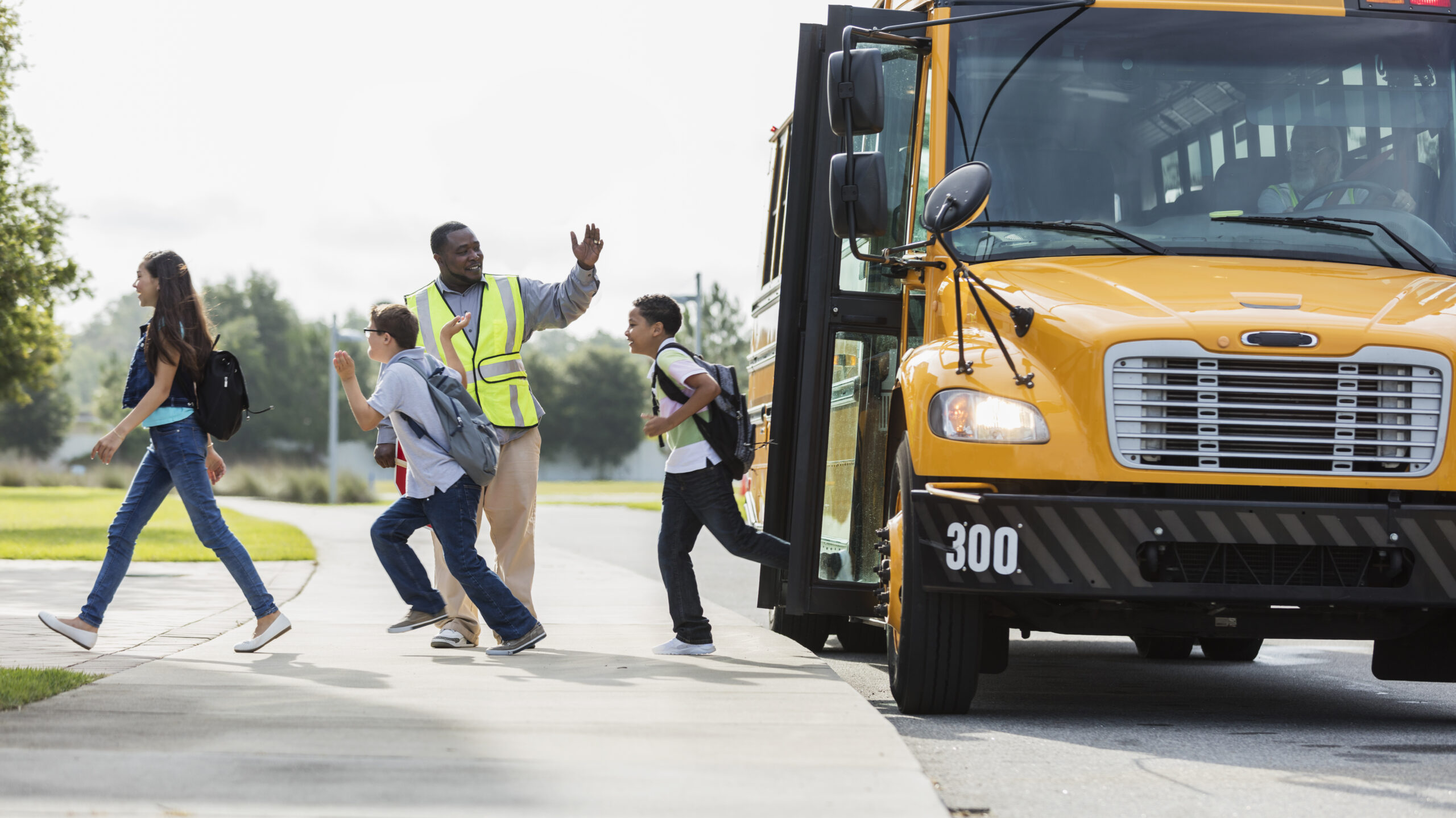How daylight saving time throws off your internal clock
Shifting daylight from morning to evening is not a healthy move, science finds

Daylight saving time cuts back on morning light. That can make it harder for people — especially teens — to comfortably wake.
SeventyFour/iStock/Getty Images Plus
By Meghan Rosen
On March 12, nearly every state in the United States will “spring forward” from standard time to daylight saving time, or DST. (Hawaii and most of Arizona don’t observe DST.) That switch shifts an hour of light from the morning to the evening. For many people, it means losing an hour of sleep and trying to rise before the sun. Our bodies don’t like it. And they may be telling us something important, science now suggests.
Twice each year, the scheduled clock changes — to daylight saving time each spring, and back to standard time each fall — wreak havoc on sleep and schedules.
Actually, the name “daylight saving time” isn’t quite right, says Kenneth Wright. He’s a sleep and body-clock expert at the University of Colorado Boulder. There’s no change in the amount of daylight, he says. “What we’re doing is changing how we live relative to the sun.” When we move clocks forward an hour, noon no longer represents when the sun is near its highest point in the sky. Suddenly, people’s schedules are out of sync with the sun.
Biologically, Wright says, that’s a big deal. Humans evolved with a daily cycle of light and dark. It sets our body’s internal clock. And that, in turn, directs the rhythms of our bodies, from when we sleep and wake to when hormones are released. Morning’s blue light, in particular, is a key wake-up signal. When we tinker with time (or light), he says, “we’re essentially making the choice: Do we want to go with what we’ve evolved with, or do we want to alter that?”
What if he had to rank permanent daylight saving time, permanent standard time or our current practice of switching twice a year? From a health perspective, Wright says, “I think the answer is incredibly clear.” Permanent standard time is healthiest. And he ranks permanent daylight saving time as the worst choice.
Last March, the U.S. Senate unanimously voted to make daylight saving time permanent. But the House did not vote on the bill. As a result, it could not become law. But if passed, the Sunshine Protection Act would have stopped our turning clocks to and fro.
Congress tried a similar — and unpopular — experiment in the 1970s. Such a change would have prioritized evening light throughout the year.
Wright is not alone in arguing against daylight saving time. As DST waned last year, sleep experts across the country spoke up in favor of standard time. In fact, the health case for staying on daylight saving time is pretty dim. Especially gloomy is what such a shift could mean for adolescents.
Daylight saving time’s toll on health
The move to daylight saving time has been linked to many health problems, notes Beth Malow. She is a sleep researcher at Vanderbilt University in Nashville, Tenn. Those problems include sleep loss and heart attacks. The switch even brings a higher risk of dying in the hospital after a stroke. On behalf of sleep scientists, last September she authored an argument for standard time in the journal Sleep. She even testified before the U.S. House of Representatives on this issue.
“My overall message was that permanent standard time was a healthier choice,” says Malow.
Some studies take advantage of U.S. time zone borders. Back in 2019, scientists compared the health of people living on the late sunset side of a border against those living on the early sunset side. And living on the early sunset side had a higher rate of certain health problems. These included obesity, diabetes, cardiovascular diseases and breast cancer. A similar study in 2018 found an increased risk of liver cancer the farther west people lived within a time zone. In more western areas, the sun rises and sets later in the day, meaning more light in evening hours.
But the downsides of nighttime light are not always crystal clear.
A November study, for instance, suggested that year-round daylight saving time would reduce deer-vehicle collisions. But studies like these can be hard to interpret, Malow says. Other factors may come into play, such as a deer’s seasonal activity and changing roadway conditions. “The car-crash literature has been so mixed,” she says. “I’ve seen stuff come out on both sides.”
One study compared car crashes on opposite edges of a time zone. People on the western edge had more fatal accidents than their easterly neighbors. Those findings appeared last year in Time & Society.
Dark mornings and light evenings mean people’s body clocks don’t line up with the sun. That mismatch can hamper sleep. And drowsy drivers may have more collisions. In the evenings, Malow says, if “there’s still light in the sky, it messes with our brains.”
Morning light wakes up the brain
The brains of teens and tweens are even more vulnerable, Malow says. When kids go through puberty, the brain waits an hour or two longer to release melatonin. That “hormone of darkness” tells the bodies of kids and adults alike that it’s time to go to sleep.
The delay in its release means older kids just aren’t as sleepy in the evenings as they used to be. That makes bedtime tough. Add early school start times into the mix and rising and shining gets even harder.
“I have a middle schooler,” says Lisa Meltzer. “It’s brutal.” She’s a pediatric sleep psychologist at National Jewish Health in Denver, Colo. Some U.S. school districts are making changes that might make mornings easier. This year, most high schools and middle schools in California tried out later start times. Five years ago, Meltzer’s school district did a similar test. What these schools learned can give a glimpse at how older kids might fare if we kept daylight saving time year-round, Meltzer says.
Meltzer had presented the science behind changing school start times to her school board. In 2017, the Cherry Creek School District in suburban Denver flipped middle and high schools’ early start times with elementary schools’ later ones. “I was not a popular parent at the bus stop,” she says.
The change didn’t have much effect on younger kids. They still started class well after sunrise, at 8 a.m. But older kids, who now started school at 8:20 or 8:50 a.m., noticed a big difference. They slept more at night and tended to function better during the day. Meltzer’s team reported those results in the February 2022 Sleep Medicine.

“The number one thing [high-schoolers] said was how much they liked going to school when it was light out,” she says.
And it wasn’t just the kids. Teachers, too, felt the benefits of later start times. Meltzer and her colleagues reported that in the November 2022 Journal of School Health.
Morning light is crucial for keeping our bodies on schedule, Meltzer says. Permanent daylight saving time would reduce how often we would experience brain-wakening sunshine. “We need morning sunlight to keep our internal clocks on track,” she says. “I cannot emphasize this enough.”
So far, the Senate’s plan for year-round daylight saving time has seemed to stall. For now, the prospect of an everlasting shift toward evening light doesn’t look bright. So every March and November, we have to adjust.
A sleep doctor’s tips for getting more Zs
Sonal Malhotra is a sleep doctor at Baylor College of Medicine in Houston, Texas. She has a few suggestions on how anyone struggling with sleep — whether during standard time or daylight saving time — can get a more restful night.
- Try to wake up to morning sunshine.
- Keep a consistent sleep schedule. That means waking up and going to bed around the same time every day (even on weekends).
- Keep a consistent meal and exercise schedule.
- Avoid afternoon naps.
- Avoid afternoon caffeine.







